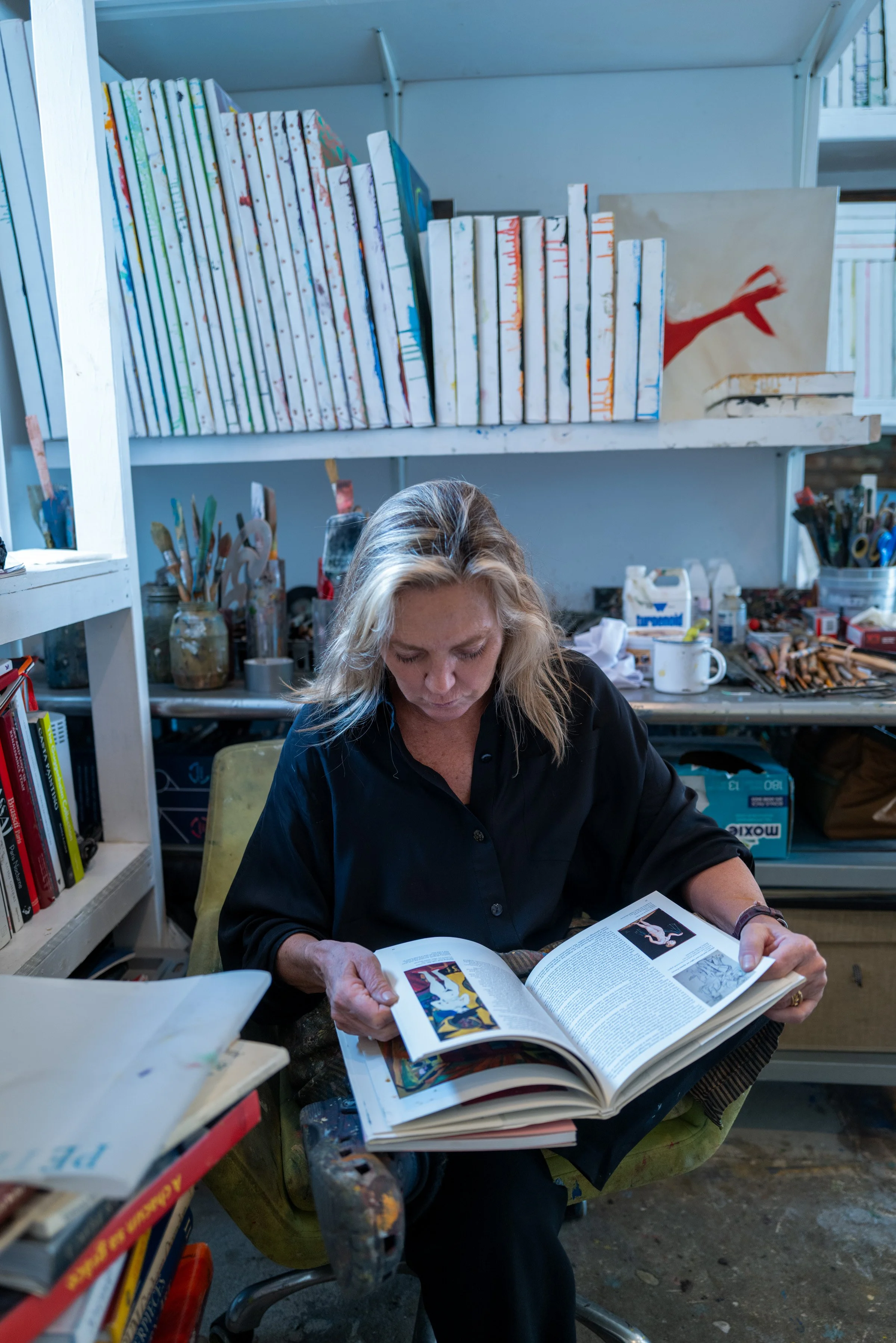In the Studio with… Claudia Doring Baez
In the heart of Brooklyn and amidst the calm of Long Island’s Quogue, Claudia Doring Baez creates art that speaks to both the rush of city life and the reflective stillness of nature. With studios in two vastly different environments, her work is shaped by the unique energy of each space. Baez, who blends introspection with an eye for narrative, is currently delving into a new series inspired by the evocative portraits of Peter Hujar and the cinematic tension of Jean-Luc Godard's Contempt.
We recently visited her studio to learn more about how her creative process unfolds, the materials that drive her, and the rituals that anchor her artistic practice.
Where is your studio located, and how does the space influence your creative process?
I’m fortunate to have two studios: one in Gowanus, Brooklyn, and the other in Quogue, Long Island. Each location offers a very different rhythm and energy, which in turn shapes the work I produce there.
In Brooklyn, my studio is nestled behind The Empty Circle, a gallery focused on emerging artists. The neighborhood is a dynamic hub of creative activity—Powerhouse Arts, Norte Maar, and other institutions are just around the corner. Being immersed in that energy creates a sense of urgency and dialogue that pushes me forward.
Quogue, on the other hand, is about stillness and introspection. It’s a quieter space, and my work there tends to reflect a more contemplative state of mind. While neither body of work is directly based on the environment, the atmosphere of each place—urban and fast-paced versus serene and reflective—seeps into the process in more subtle, psychological ways.
Does the environment around your studio impact the themes or materials you choose for your work?
The environment shapes the mood more than the materials. While my surroundings do inspire a certain tempo, my work often begins from within—through introspection, memory, and research. I draw heavily from film, photography, and literature. At the moment, I’ve been studying Peter Hujar’s tender and evocative animal portraits. They’ve sparked a new body of work that reinterprets his black-and-white images through my own lens, introducing vivid color and a sense of painterly tactility.
Can you describe your studio setup?
My Brooklyn studio is a private space directly behind The Empty Circle gallery. Being so close to other artists and their exhibitions is deeply enriching—I often find myself pausing to consider how others are thinking and making. It keeps me curious.
My studio setup is fairly minimal: I need a wall to hang a canvas, a narrow table beneath it, and a freezer to store jars of oil paint pre-mixed with walnut oil and turpentine. I paint wet-on-wet directly from these jars, and the surface must always feel alive. I like to work on large canvases, with thick brushes, oil sticks, and sometimes charcoal to build up the image.
How has your relationship with your studio changed over time?
After completing my MFA at the New York Studio School in 2012, I first had a studio on Chrystie Street before my Quogue space was ready. One of my professors, Carole Robb, used to say: “Do you really think you’re an artist if you don’t go to work every day?” That mantra stuck with me. Since then, I treat my studio like a sacred workplace—I’m there every weekday, usually from noon to six. It’s a daily ritual that keeps me grounded.
What materials do you find yourself gravitating toward, and why?
I’m deeply committed to oil paint. I work directly onto the canvas with generous, assertive brushstrokes—always painting wet-on-wet. My goal is not to replicate an image but to reimagine it, to narrate a scene through gesture and texture. There’s a haptic quality to the surfaces I create; the interaction between pigment and canvas is as important as the image itself.
Are there any materials you’ve recently experimented with that have changed your practice?
While I’ve experimented with other media—sculpture, film, photography—I always return to painting. There’s something about oil and charcoal that feels timeless yet endlessly challenging. Reinventing such a historic medium is both daunting and liberating. It demands a physical and intellectual rigor that I crave.
What are you working on at the moment?
Right now, I’m working on two parallel series. In Brooklyn, I’m developing paintings based on Peter Hujar’s photographs. In Quogue, I’m revisiting Contempt, Jean-Luc Godard’s 1963 film. I saw it when I was 13, far too young, and the images have haunted me ever since—particularly its depiction of Brigitte Bardot as a symbol of male desire. This series is my way of interrogating those early imprints and reimagining them through a feminist, painterly lens.
Do you have any rituals that help you focus or spark creativity in the studio?
Absolutely. I begin each day with turmeric tea and honey. I’m always surrounded by books—monographs, poetry, philosophy—which act as quiet companions in my space. Before applying paint, I mark the back of the canvas with the title, date, and my signature using charcoal. This grounding ritual helps me step fully into the work, both physically and mentally.




